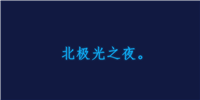前提:
要在网页上实现一个适用于pc端和移动端的俄罗斯方块游戏,您可以使用html、css和javascript。html5的canvas元素可以让您轻松地在网页上绘制图形。以下是一些实现该游戏的基本步骤:
设置html结构:
创建一个html文件,设置基本的html结构,包括<!doctype>, <html>, <head>和<body>标签。
<!doctype html>
<html lang="en">
<head>
<meta charset="utf-8">
<meta name="viewport" content="width=device-width, initial-scale=1.0">
<title>tetris</title>
<link rel="stylesheet" href="styles.css" rel="external nofollow" >
</head>
<body>
<canvas id="gamecanvas" width="320" height="640"></canvas>
<script src="tetris.js"></script>
</body>
</html>创建css样式:
在一个名为styles.css的文件中设置基本的样式。例如,将游戏画布居中:
body {
display: flex;
justify-content: center;
align-items: center;
height: 100vh;
margin: 0;
background-color: #222;
}
canvas {
border: 1px solid #fff;
}编写javascript代码:
在一个名为tetris.js的文件中编写游戏的逻辑。实现以下功能:
- 定义方块形状和颜色
- 初始化游戏变量和画布
- 定义游戏循环
- 处理用户输入
- 定义方块移动和旋转逻辑
- 检查并消除已填满的行
- 判断游戏结束条件
响应式设计:
确保游戏在不同屏幕尺寸和设备上表现良好。
可通过css中的媒体查询实现:
@media (max-width: 600px) {
canvas {
width: 100%;
height: auto;
}
}添加触摸事件支持:
为了使游戏在移动设备上正常运行,您需要处理触摸事件。可以使用javascript的touchstart、touchmove和touchend事件。根据用户的触摸行为来模拟键盘操作,如左右滑动来移动方块,向下滑动加速下落,向上滑动旋转方块。
测试并优化:
在不同设备和浏览器上测试游戏,确保其正常运行。可根据需要进行调整和优化。
完成上述步骤后,您将成功创建一个适用于pc端和移动端的俄罗斯方块游戏。您可以根据需求调整游戏的外观和功能。
代码示例:
以下是一个使用javascript实现的基本俄罗斯方块游戏的示例代码。这份代码包括了第三点提到的游戏逻辑。请注意,这份代码仅为示例,您可能需要根据实际需求进行调整。
const canvas = document.getelementbyid("gamecanvas");
const ctx = canvas.getcontext("2d");
const scale = 20;
const tetrominoes = [
[
[1, 1, 1],
[0, 1, 0]
],
[
[1, 1],
[1, 1]
],
[
[1, 1, 0],
[0, 1, 1]
],
[
[0, 1, 1],
[1, 1, 0]
],
[
[1, 1, 1, 1]
],
[
[1, 1, 1],
[1, 0, 0]
],
[
[1, 1, 1],
[0, 0, 1]
]
];
const colors = [
"#00ffff",
"#ffff00",
"#ff00ff",
"#00ff00",
"#0000ff",
"#ffa500",
"#ff0000"
];
let board = array.from({ length: canvas.height / scale }, () =>
array(canvas.width / scale).fill(0)
);
class tetromino {
constructor() {
this.type = math.floor(math.random() * tetrominoes.length);
this.shape = tetrominoes[this.type];
this.color = colors[this.type];
this.x = math.floor(board[0].length / 2) - math.ceil(this.shape[0].length / 2);
this.y = 0;
}
draw() {
this.shape.foreach((row, i) => {
row.foreach((value, j) => {
if (value) {
ctx.fillstyle = this.color;
ctx.fillrect((this.x + j) * scale, (this.y + i) * scale, scale, scale);
ctx.strokestyle = "#000";
ctx.strokerect((this.x + j) * scale, (this.y + i) * scale, scale, scale);
}
});
});
}
move(dir) {
this.x += dir;
if (this.collides()) {
this.x -= dir;
return;
}
this.draw();
}
rotate() {
const temp = this.shape;
this.shape = this.transpose(this.shape);
if (this.collides()) {
this.shape = temp;
return;
}
this.draw();
}
drop() {
this.y += 1;
if (this.collides()) {
this.y -= 1;
this.lock();
this.checklines();
return new tetromino();
}
this.draw();
return this;
}
collides() {
for (let y = 0; y < this.shape.length; y++) {
for (let x = 0; x < this.shape[y].length; x++) {
if (
this.shape[y][x] &&
(board[y + this.y] && board[y + this.y][x + this.x]) !== undefined
) {
if (board[y + this.y][x + this.x]) {
return true;
}
} else {
return true;
}
}
}
return false;
}
lock() {
this.shape.foreach((row, i) => {
row.foreach((value, j) => {
if (value) {
board[this.y + i][this.x + j] = this.color;
}
});
});
}
checklines() {
outer: for (let y = board.length - 1; y >= 0; ) {
for (let x = 0; x < board[y].length; x++) {
if (!board[y][x]) {
y--;
continue outer;
}
}
board.splice(y, 1);
board.unshift(array(board[0].length).fill(0));
}
}
transpose(matrix) {
const rows = matrix.length;
const cols = matrix[0].length;
const result = array.from({ length: cols }, () => array(rows).fill(0));
for (let y = 0; y < rows; y++) {
for (let x = 0; x < cols; x++) {
result[x][y] = matrix[y][x];
}
}
return result.reverse();
}
}
function drawboard() { ctx.fillstyle = "#000"; ctx.fillrect(0, 0, canvas.width, canvas.height);
board.foreach((row, y) => {
row.foreach((value, x) => {
if (value) {
ctx.fillstyle = value;
ctx.fillrect(x * scale, y * scale, scale, scale);
ctx.strokestyle = "#000";
ctx.strokerect(x * scale, y * scale, scale, scale);
}
});
});
let piece = new tetromino(); let dropcounter = 0; let dropinterval = 1000; let lasttime = 0;
function update(time = 0) { const deltatime = time - lasttime; lasttime = time;
dropcounter += deltatime;
if (dropcounter > dropinterval) {
piece = piece.drop();
dropcounter = 0;
}
drawboard();
piece.draw();
requestanimationframe(update);
}
update();
document.addeventlistener("keydown", (event) => { if (event.key === "arrowleft") { piece.move(-1); } else if (event.key === "arrowright") { piece.move(1); } else if (event.key === "arrowdown") { dropinterval = 50; } else if (event.key === "arrowup") { piece.rotate(); } });
document.addeventlistener("keyup", (event) => { if (event.key === "arrowdown") { dropinterval = 1000; } });
这段代码实现了一个简单的俄罗斯方块游戏,包括绘制游戏画布、方块的移动、旋转和下落、消除已填满的行等功能。为了使游戏更加完整和易于操作,您还需要根据第五点的指示为游戏添加触摸事件支持。
同时,也建议您根据自己的需求和喜好优化游戏的功能、外观和性能。
到此这篇关于使用js+css实现俄罗斯方块游戏的文章就介绍到这了,更多相关js+css实现俄罗斯方块内容请搜索代码网以前的文章或继续浏览下面的相关文章希望大家以后多多支持代码网!







发表评论